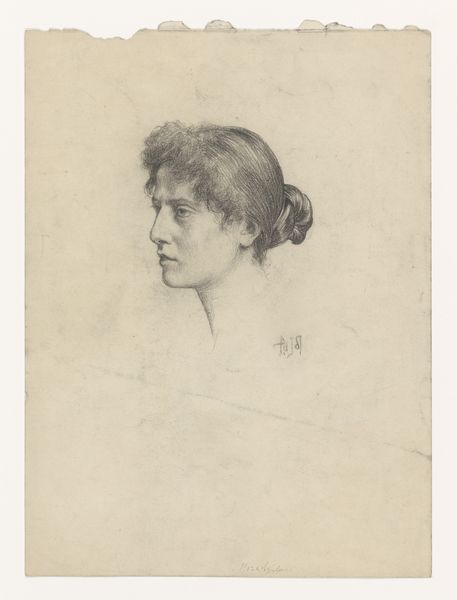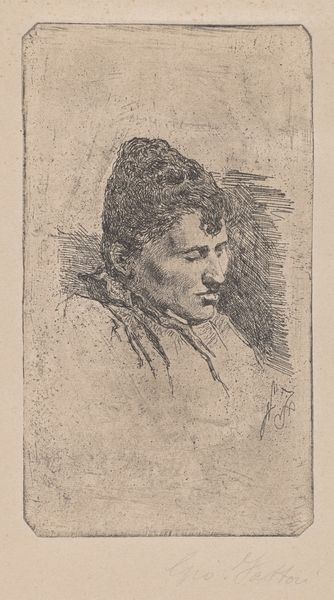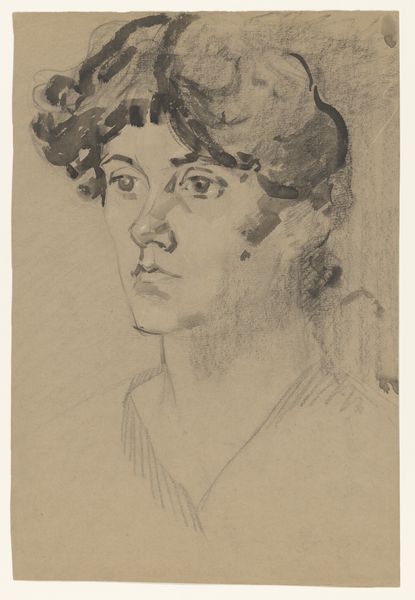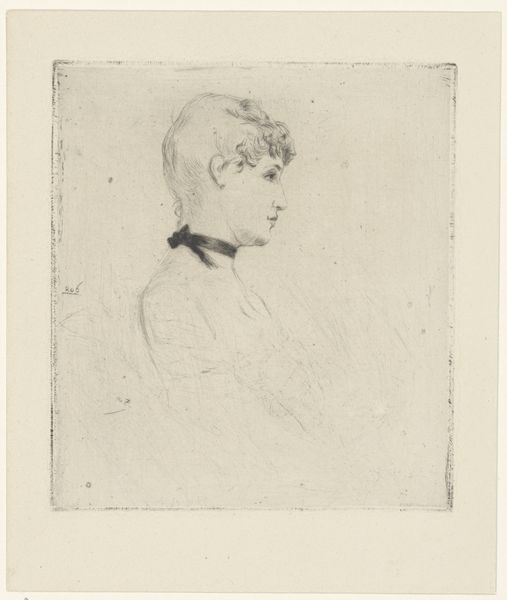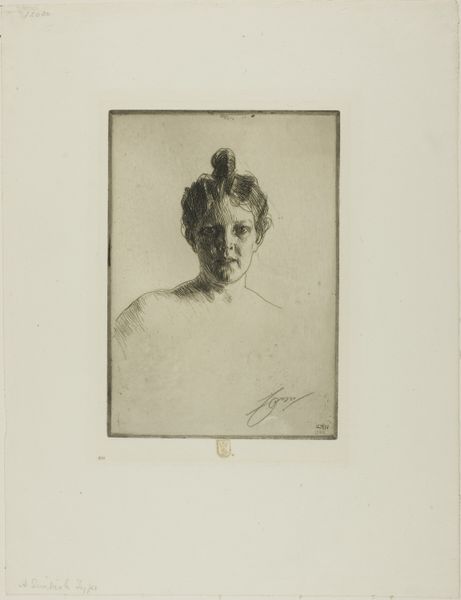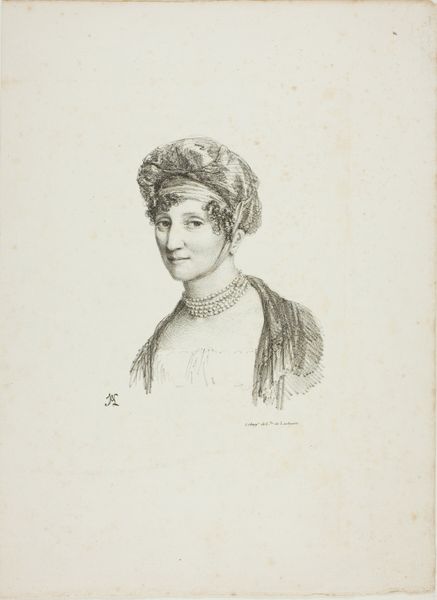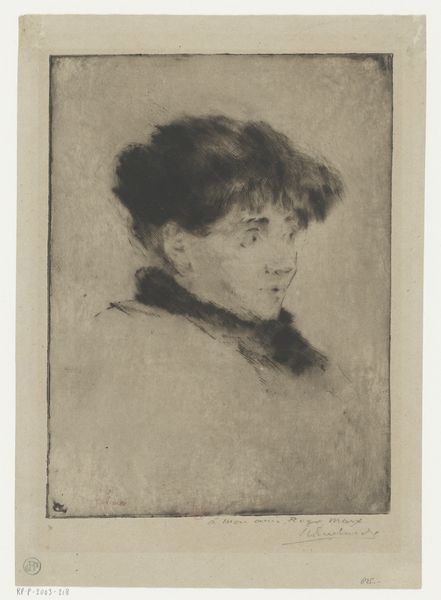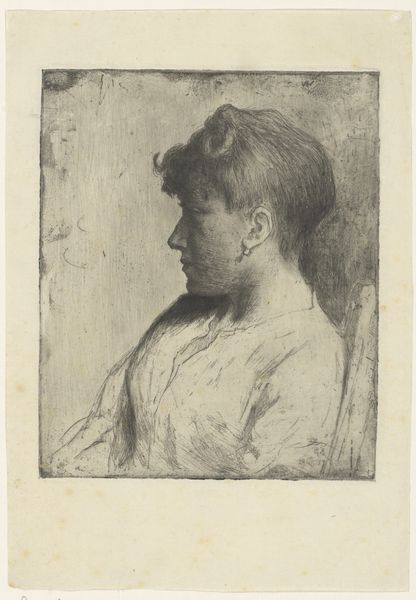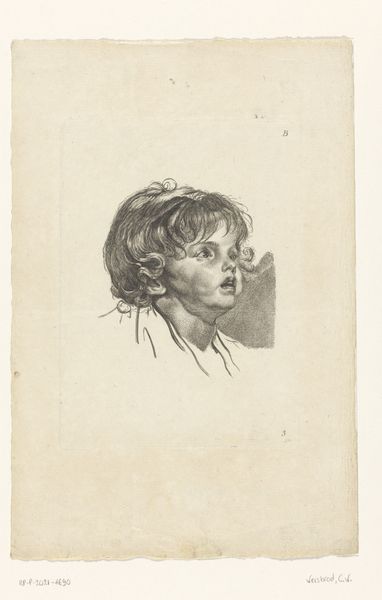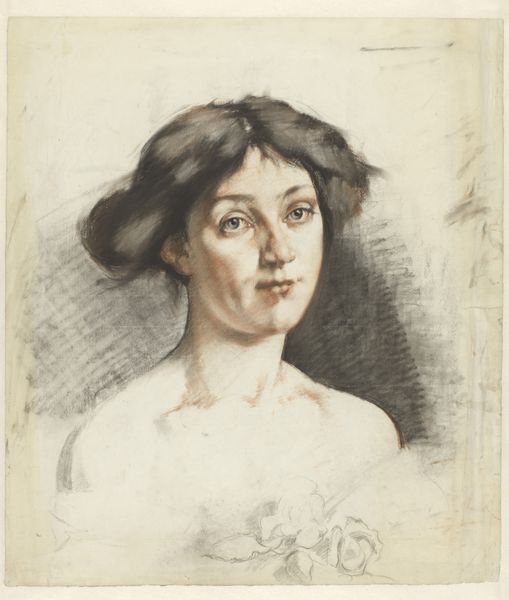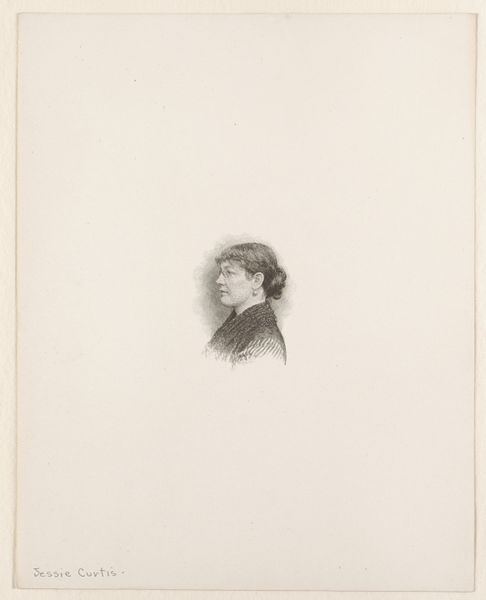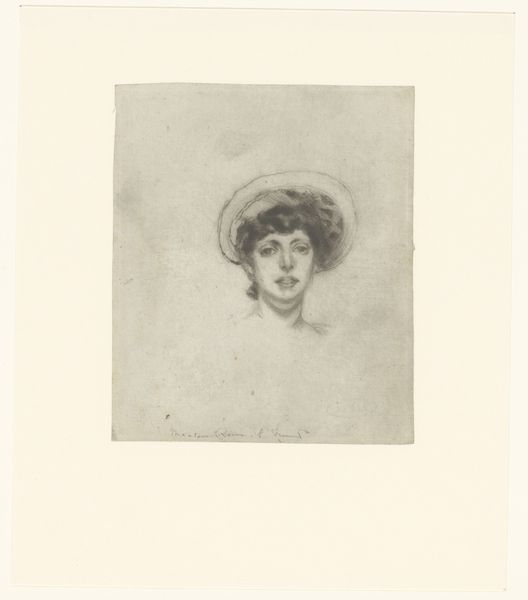
Dimensions: 59 × 55 mm (image); 148 × 100 mm (plate); 157 × 100 mm (sheet)
Copyright: Public Domain
Curator: Theodore Roussel’s "Portrait of Miss Edith Austin," an etching printed on paper created between 1895 and 1900, captures the subject with striking directness. Editor: The first thing that strikes me is the delicate, almost ethereal quality of the print. The muted tones and fine lines create a sense of intimacy and quiet observation. Curator: Indeed, the composition itself is quite compelling. Note how the oval framing isolates the face, pushing it forward while allowing a small area of dress. The meticulous hatching enhances her gaze, presenting a balance of specificity and soft tonality that invites the viewer in. Editor: For me, that softness comes from its production. As an etching, think of the manual labor involved, the layering of acid, the precise timing needed to get these wispy lines. Each plate must have been reworked so meticulously, representing hours and hours of dedicated labor by Roussel to generate these visual impressions. It speaks of artistic choices in its moment, but also its own creation across time, imprinting itself onto the surface of the paper. Curator: The choice of etching underscores the period’s fascination with tonal subtleties achievable in printmaking, emulating atmospheric effects of Impressionist painting through an inherently graphic means. Consider, too, that as an English émigré to France, Roussel negotiated artistic traditions, creating work that, in its technique, echoes a kind of British refinement. Editor: It’s remarkable how Roussel could harness such laborious methods, almost an antithesis to industrial mass production, to generate an image of such personal connection. The material qualities, the type of paper itself, surely contributes to the emotional texture as well, the choice of surface is fundamental. It adds layers to our interpretation of Edith beyond just her visual presentation. Curator: Ultimately, I would say that the artist created more than just a likeness; we see reflected social and aesthetic considerations within a fleeting moment. Editor: Absolutely, thinking about the socio-economic conditions informs so much, too. It is the intersection between materials, making, and context which is key.
Comments
No comments
Be the first to comment and join the conversation on the ultimate creative platform.
